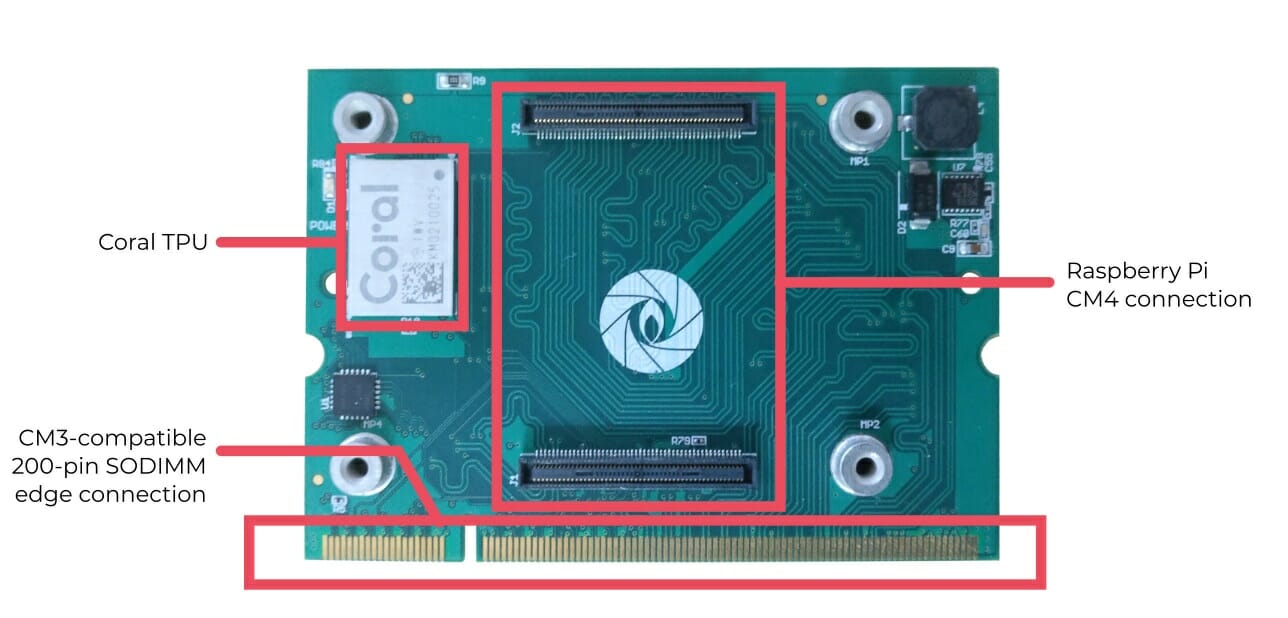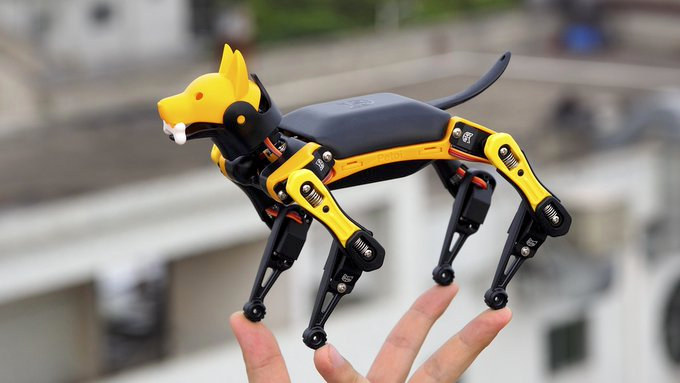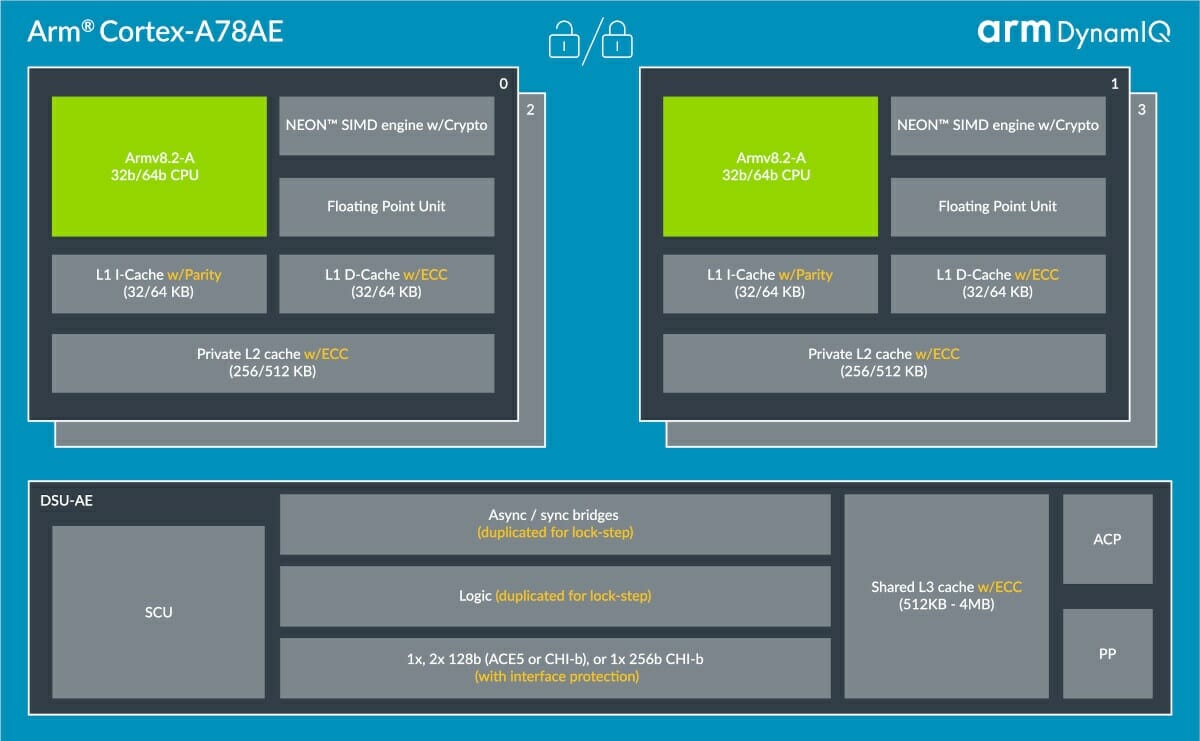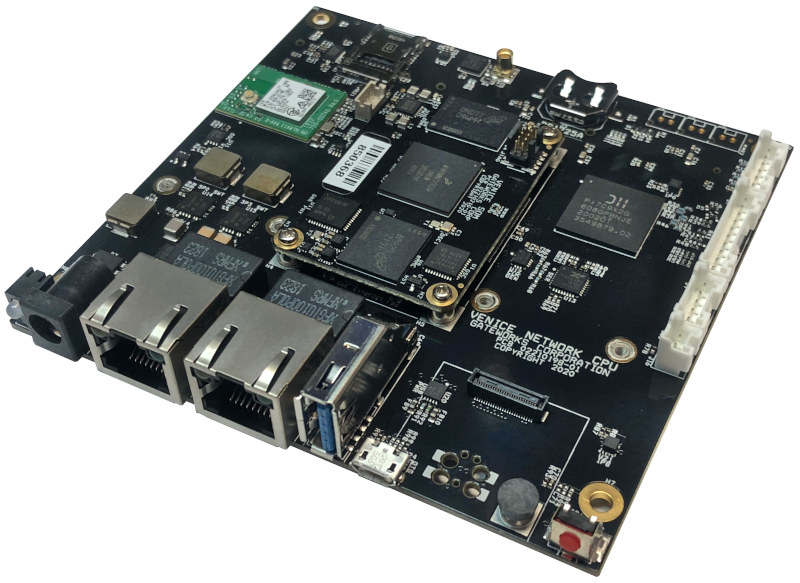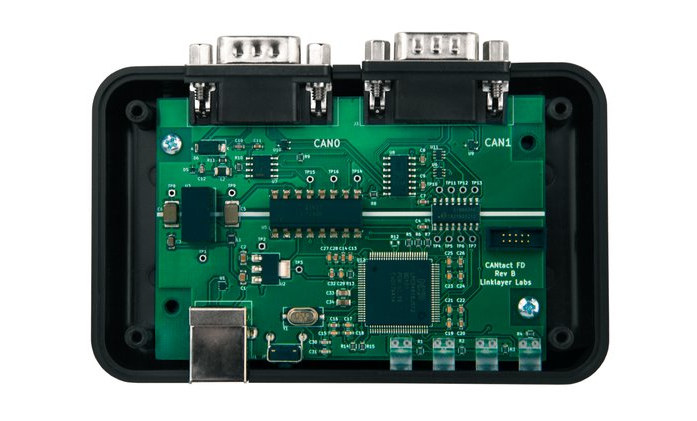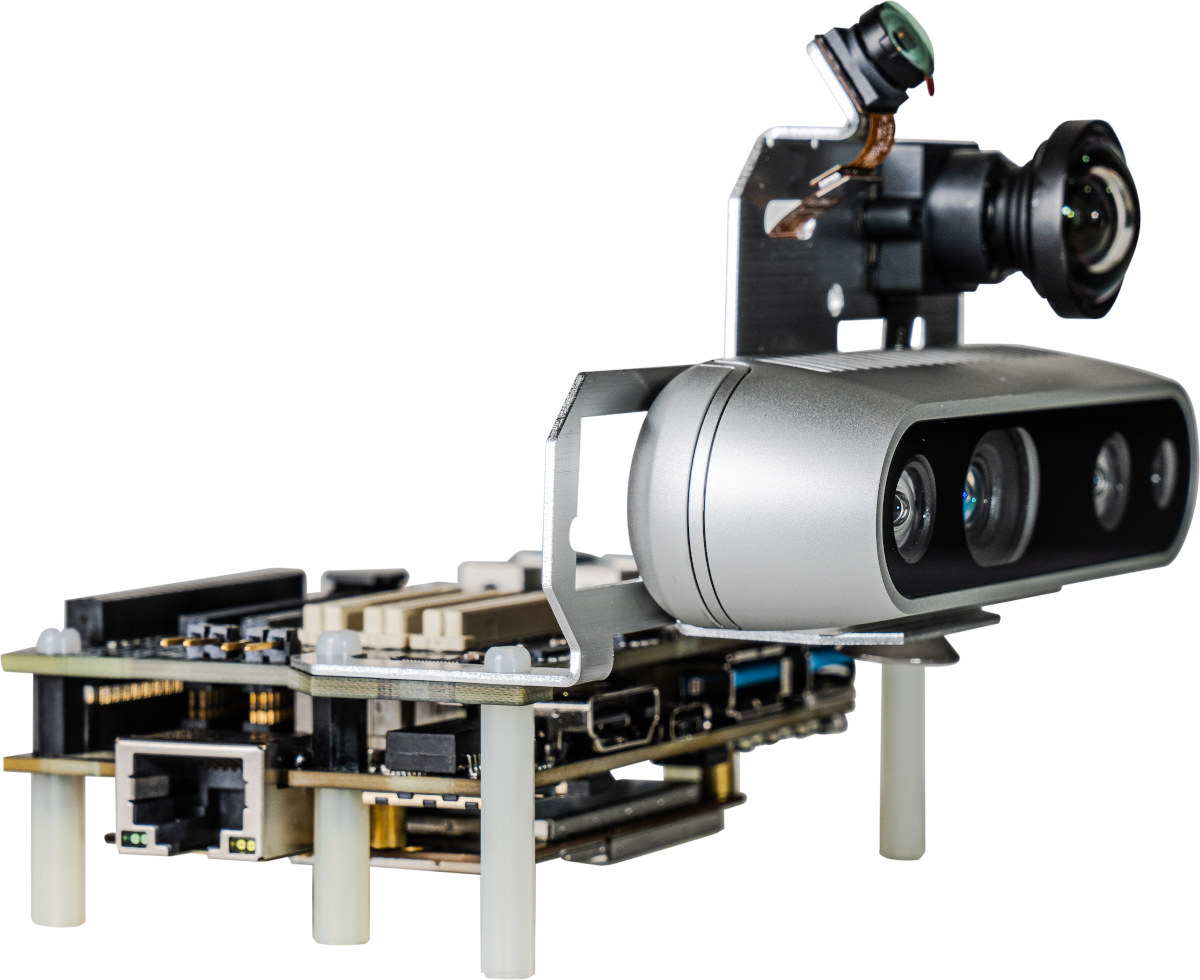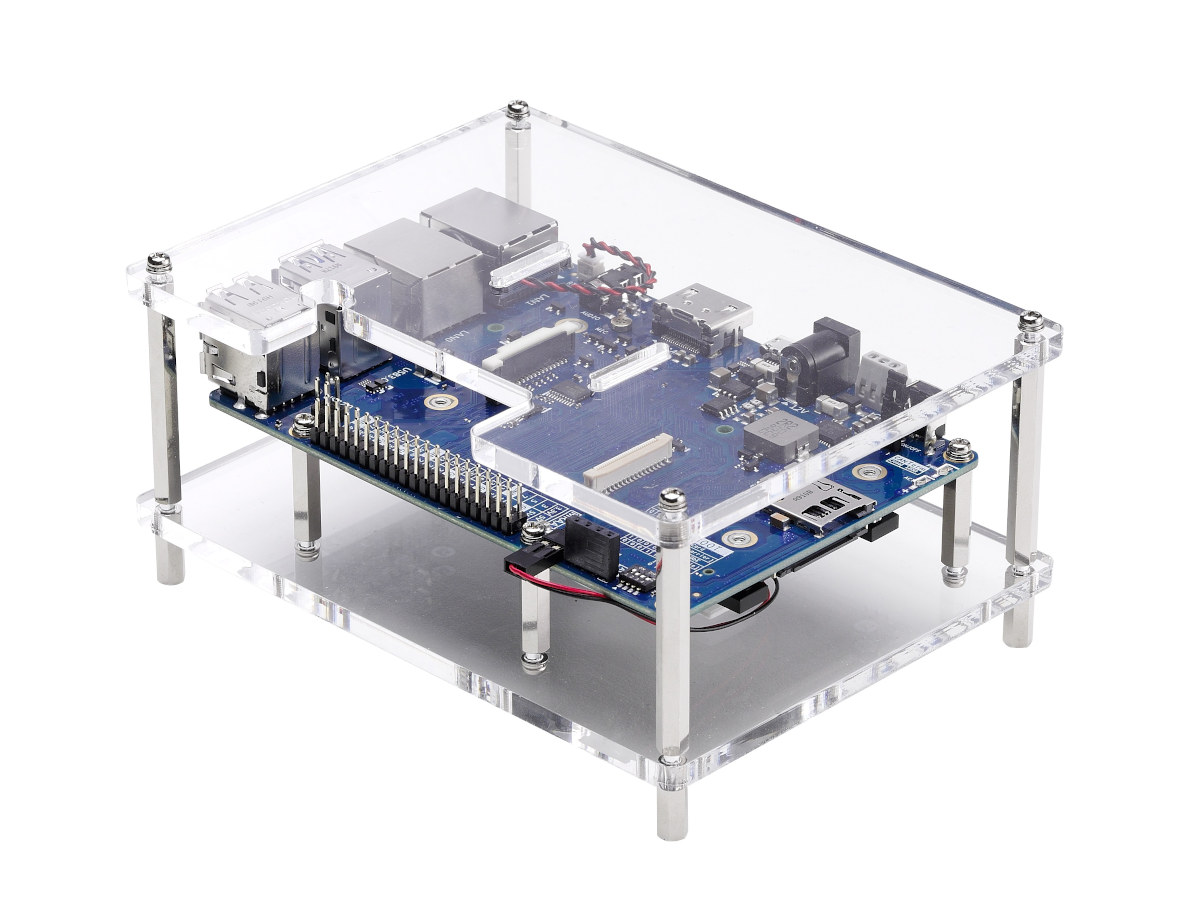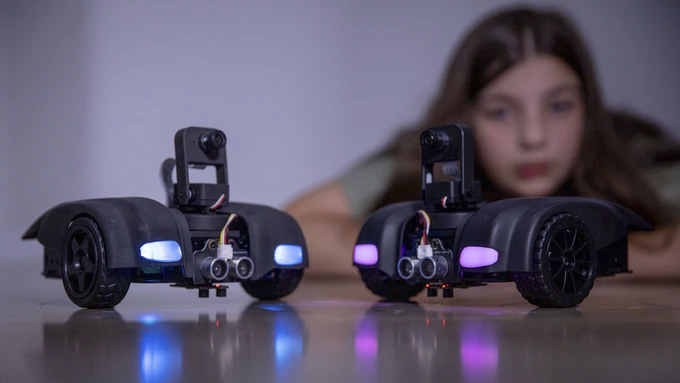Raspberry Pi Trading has just launched 32 different models of Raspberry Pi CM4 and CM4Lite systems-on-module, as well as the “IO board” carrier board. But the company has also worked with third-parties, and Gumstix, an Altium company, has unveiled four different carrier boards for the Raspberry Pi Compute Module 4, as well as a convenient CM4 to CM3 adapter board that enables the use of Raspberry Pi CM4 on all/most carrier boards for the Compute Module 3/3+. Raspberry Pi CM4 Uprev & UprevAI CM3 adapter board Gumstix Raspberry Pi CM4 Uprev follows the Raspberry Pi Compute Module 3 form factor but includes two Hirose connectors for Computer Module 4. The signals are simply routed from the Hirose connectors to the 200-pin SODIMM edge connector used with CM3. Gumstix Raspberry Pi CM4 Uprev is the same except it adds a Google Coral accelerator module. Gumstix Raspberry Pi CM4 Development Board Specifications: […]
Petoi Bittle Palm-sized Robot Dog uses Arduino and Raspberry Pi for STEM education (Crowdfunding)
You’ve probably already watched a video featuring Boston Dynamics Spot, a headless robot dog used in various industries including healthcare, public safety, construction, oil & gas, etc.. It could also be yours if you wanted a robotic pet dog at home, as long as you have $75,000 US to spare. Petoi Bittle looks eerily similar, but it’s much smaller as it fits in your palm, and could be yours for $225 on KickStarter as a kit to assemble yourself that you may get as soon as December. Bittle robot dog is designed for STEM education and can be programmed using the Arduino IDE, Python, or even Codecraft visual programming IDE. Bittle is comprised of 4 main hardware components: Plastic parts and fixtures – Body, four legs, head (which can be used to hold Arduino modules), springs, screws, etc… Actuators – 9x P1S servo with a controllable angle of 270 degrees, […]
Arm Announces Cortex-A78AE CPU, Mali-G78AE GPU & Mali-C71AE ISP for autonomous automotive & industrial applications
Arm has announced new CPU, GPU, and ISP specifically designed for autonomous automotive and industrial applications with respectively Cortex-A78AE CPU, Arm Mali-G78AE GPU, and Arm Mali-C71AE ISP. Arm Cortex-A78AE CPU Key features and specifications: Architecture – Armv8.2-A (AArch32 at ELO only) Extensions – Armv8.1, Armv8.2, and Armv8.3 extensions (LDAPR instructions only), RAS extensions, Armv8.4 Dot Product, Cryptography extensions, RAS extensions Microarchitecture Up to 4x CPU cores per cluster Out of order pipeline Neon / Floating Point Unit included with INT8 Dot Product and IEEE FP16 Optional Cryptography Unit 48-bit Physical Addressing (PA) Memory system and external interfaces 32kB to 64kB L1 I-Cache / D-Cache 256kB to 512kB L2 Cache Optional 512kB to 4MB L3 Cache ECC Support LPAE Bus interfaces – AMBA ACE or CHI Optional ACP, peripheral port Functional Safety Support – ASIL D Systematic1 and ASIL D Diagnostic2 Security – TrustZone Interrupts – External GICv4 Generic timer – […]
Gateworks Venice Industrial IoT SBC Family Features Dual Ethernet and mPCIe Sockets
US-based Gateworks is known for its Ventana and Newport embedded networking single board computers, and the company has now introduced a third family with Venice SBC family based on NXP i.MX 8M Mini SoC with support for multimedia capabilities through MIPI-DSI, MIPI-CSI and I2S Audio headers, and targetting industrial IoT with dual Ethernet, and mini PCIe expansion sockets that can be used for 802.11ax/ac/b/g/n WiFi, 5G/4G/3G/CATM1 cellular modems, and more. The company plans to introduce four different models with GW7100, GW7200, GW7300, and GW7400 with an increase in size and feature set for each model, and mechanically compatible with previous Gateworks families. But at launch, only GW7300 SBC is available so we’ll focus our reporting on this particular model. Gateworks GW7300 specifications: SoC – NXP i.MX 8M Mini single, dual or quad-core Arm Cortex-A53 processor @ up to 1.6GHz, with Arm Cortex-M4 at 400+MHz, 3D GPU (OpenGL ES 2.0), 2D […]
CANTact Pro Open-source USB to CAN Device Enables Car Hacking (Crowdfunding)
The Controller Area Network (CAN) serial communication bus allows microcontrollers and devices to communicate with each other without a host computer. It’s especially used in automotive applications where various components (dashboard, ABS, air conditioner, and other sensors) may need to communicate with each other, but it has also found its way into robots, industrial control systems, and avionics. CANTact Pro is an open-source USB to CAN device that can help you debugging or hack components inside a car or other vehicle. The tool features two CAN Interfaces and can be controlled from Windows, Linux, or Mac OS computers. CANTact Pro key features and specifications: CAN Interfaces – 1x CAN/CAN-FD/SWCAN (Single Wire CAN), 1x CAN/CAN-FD; Both via DB9 connectors Host Interface – USB 2.0 device port Misc – 4x LEDs Safety – Isolation between CAN and USB Power Supply – 5V via USB port CANTact Pro works with Windows, macOS, and […]
Qualcomm Robotics RB5 Platform Targets the Development of 5G and AI-Enabled Robots
Qualcomm Robotics RB3 Development Platform powered by Snapdragon 845 processor gets an upgrade with Robotics RB5 Platform equipped with Qualcomm QRB5165 Robotics processor designed for industrial-grade temperature operating, and featuring a 15 TOPS Qualcomm AI Engine fo artificial intelligence and machine learning applications such as heterogeneous computing, enhanced computer vision, and multi-camera concurrency. The development platform also supports for 4G and 5G connectivity via a companion module and runs Ubuntu and ROS 2.0 operating systems. Qualcomm Robotics RB5 development kit specifications: SoC – Qualcomm QRB5165 with Kryo 858 CPU @ up to 2.84 GHz, Adreno 650 GPU, Adreno 665 VPU, Adreno 995 DPU, Qualcomm Hexagon DSP with quad HVX, and Qualcomm Spectra 480 ISP System Memory – 16GB LPDDR5 RAM (POP) Storage – 128 GB UFS3.0 storage, MicroSD card slot Video Output – 1x HDMI 1.4 port Audio – 2x WSA8810 Class-D on-board speaker amplifier, built-in PDM MIC, support for […]
ROScube Pico SBC Runs Ubuntu & ROS on Intel Atom or Rockchip PX30 Processor
ADLINK has launched ROScube Pico SBC designed for robotics projects and powered by either an Intel Atom x5 Apollo Lake processor or a Rockchip PX30 Arm Cortex-A35 processor via their SMARC-compliant system-on-modules namely LEC-AL and as LEC-PX30. Both models run Ubuntu and ROS/ROS-2 operating systems simultaneously, and the company also provides NeuronBot robotics development and demo kit based on the SBC. ROScube Pico SBC and Devkit If ROScube Pico looks similar it’s because it appears to be based entirely on ADLINK previously announced ADLINK Industrial-Pi (I-Pi) SMARC Development Kit based on Rockchip PX30, and Vizi-AI development starter kit based on Atom x5-E3940 SoC and Movidius Myriad X VPU. Those are the specifications listed for ROScube Pico: SMARC Module For ROScube Pico NPS-1 – LEC-AL with Intel Atom processor, Intel Movidius Myriad X AI accelerator, 8GB LPDDR4 RAM, 32GB eMMC For ROScube Pico NPS-4 – LEC-PX30 with Rockchip PX-30 quad-core Cortex-A35 […]
MARK AI Robot Kit Aims to Teach AI & Robotics to 12+ Years Old (Crowdfunding)
We’ve written about Kendryte K210 RISC-V AI processor, and Sipeed M1 module several times including in our getting started for Maixduino and GroveAI HAT boards for low-power AI inference such as object recognition or face detection using Arduino and Micropython programming. Shenzhen-based Tinkergen, a STEM Education owned by Seeed Studio, has now leveraged the low-cost processor to design MARK AI robot kit, where MARK stands for Make A Robot Kit, in order to processor an educational AI Robotics platform for children ages 12 years old and more. MARK will ship as a kit with the main parts and components including a chassis, a cover, two wheels, stepper motors, a pan-tilt camera with K210 processor, a 2.4″ LCD display, Grove & Arduino compatible MARKduino interface board, some sensors, and six AA batteries. Tinkergen offers pre-trained model to recognized objects like humans, books, pens, or smartphones, as well as traffic signs, numbers […]


